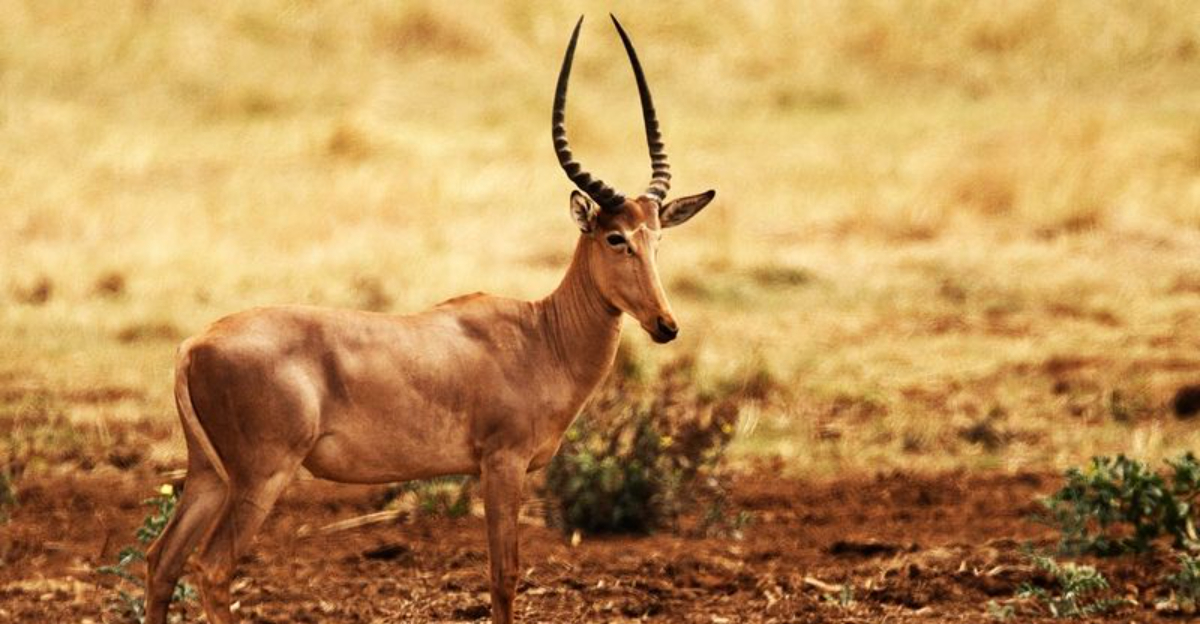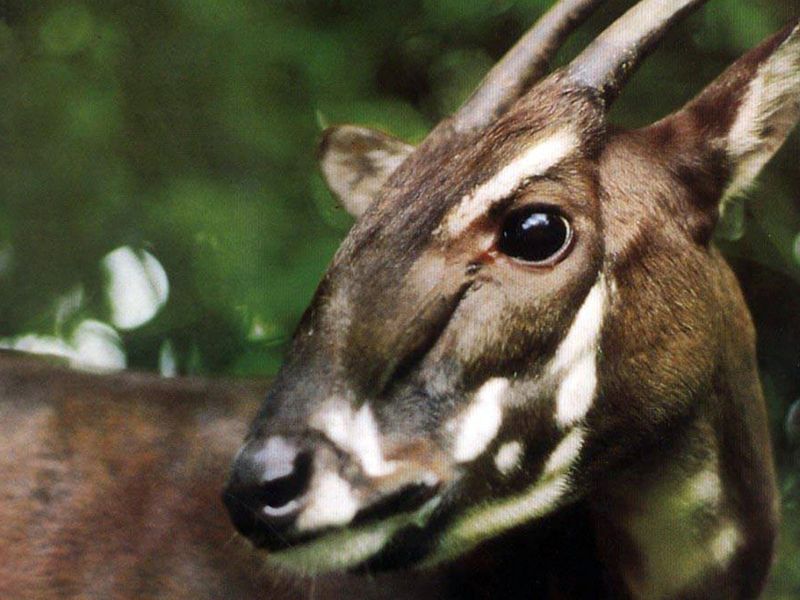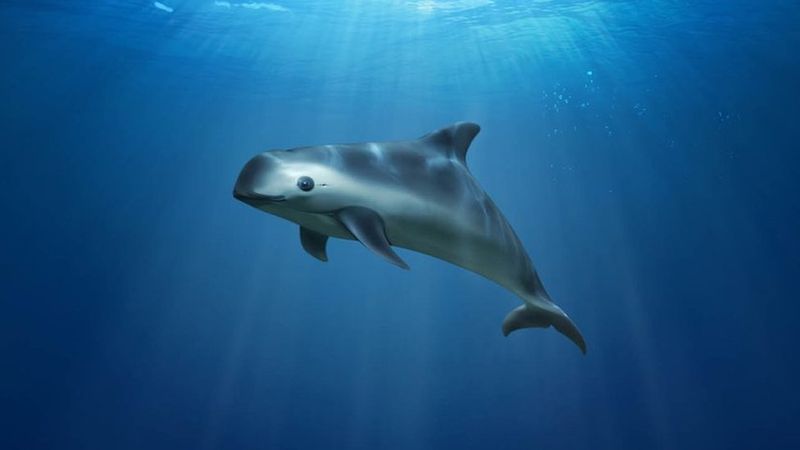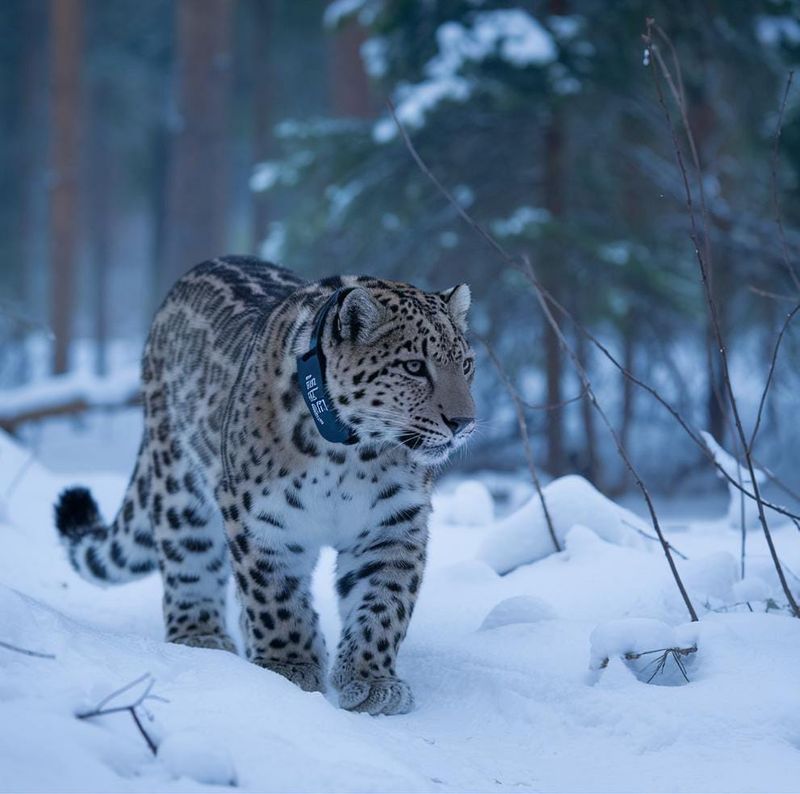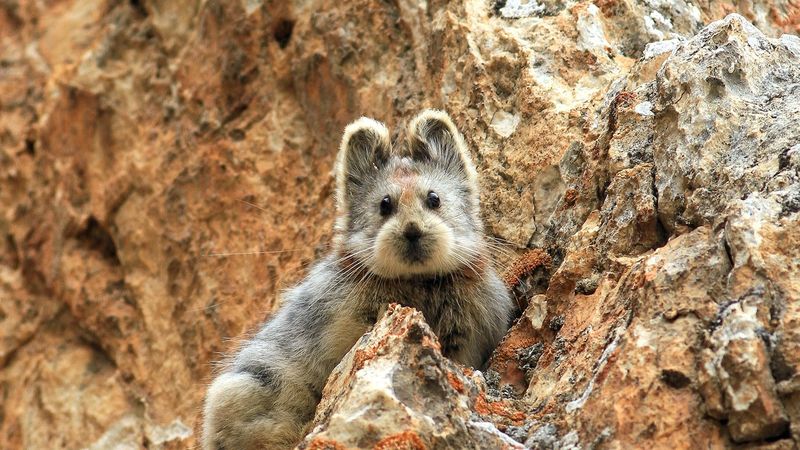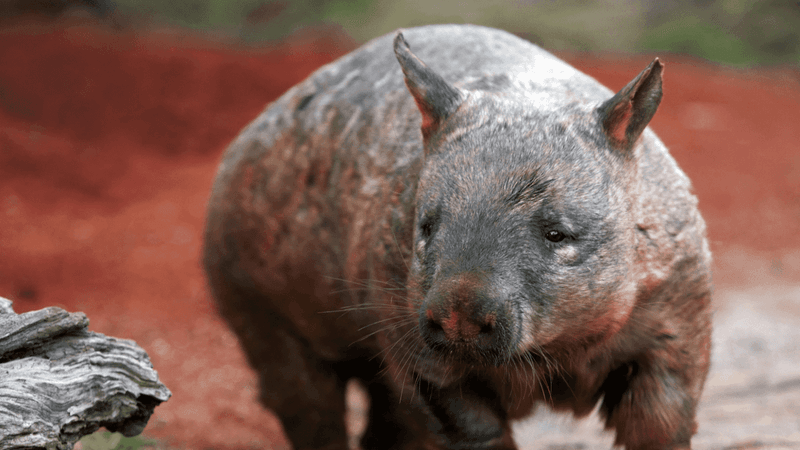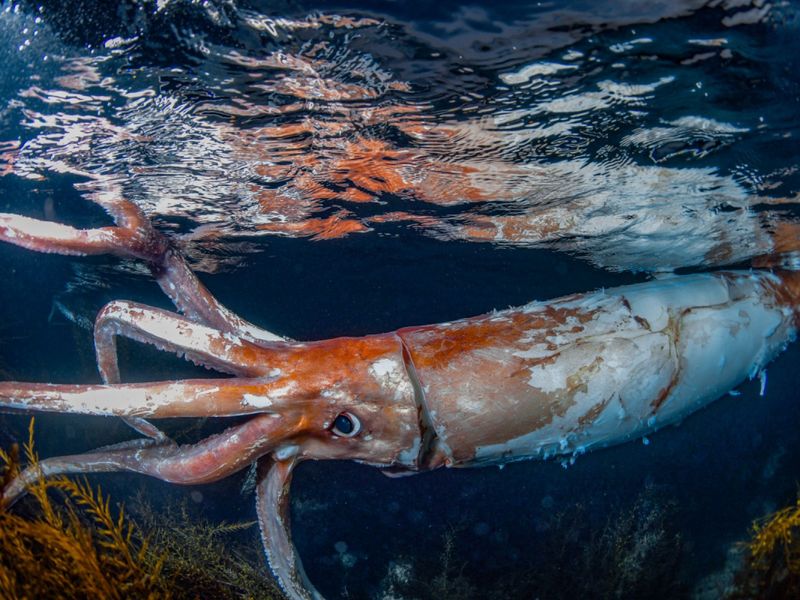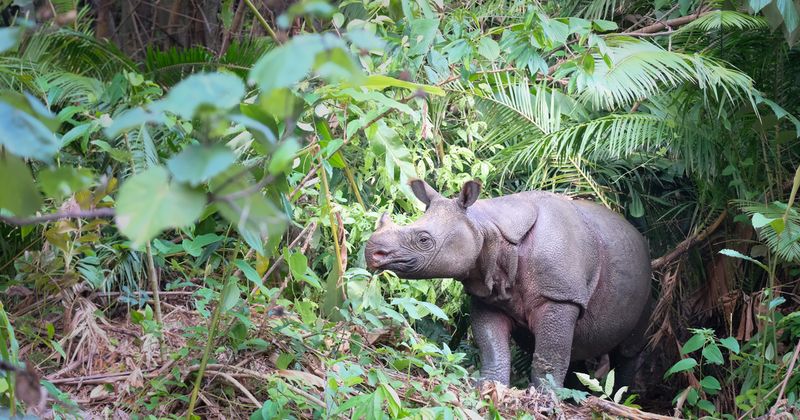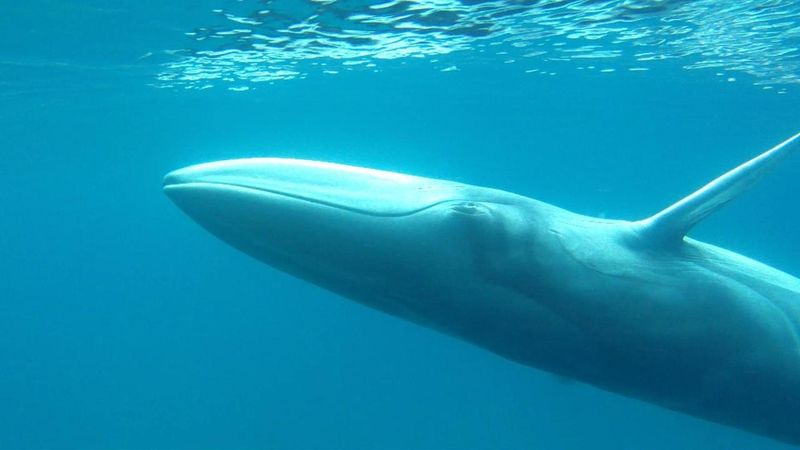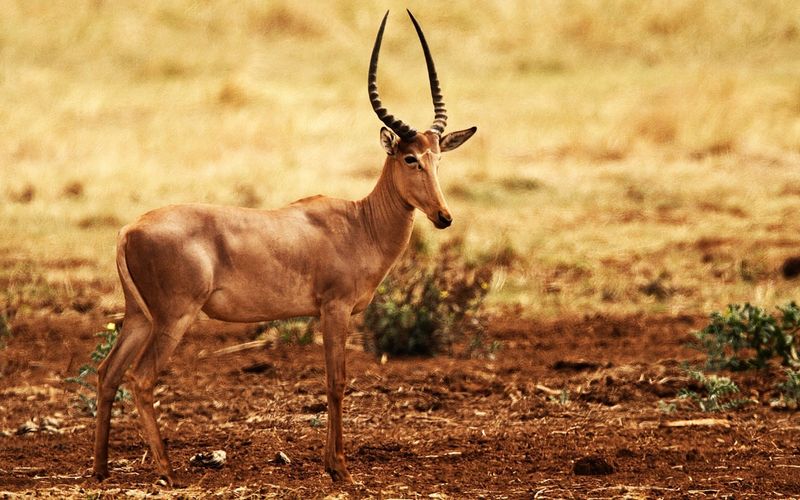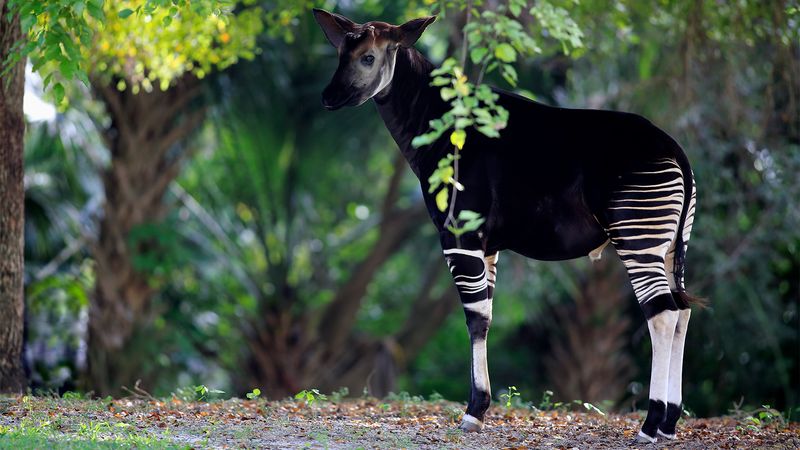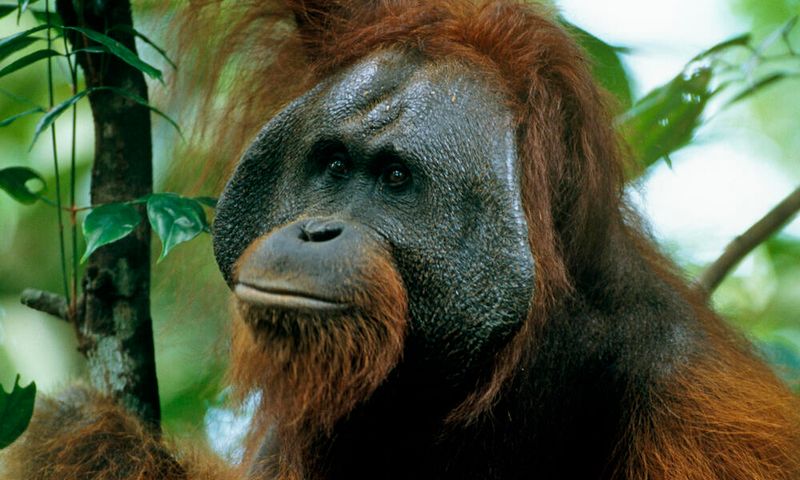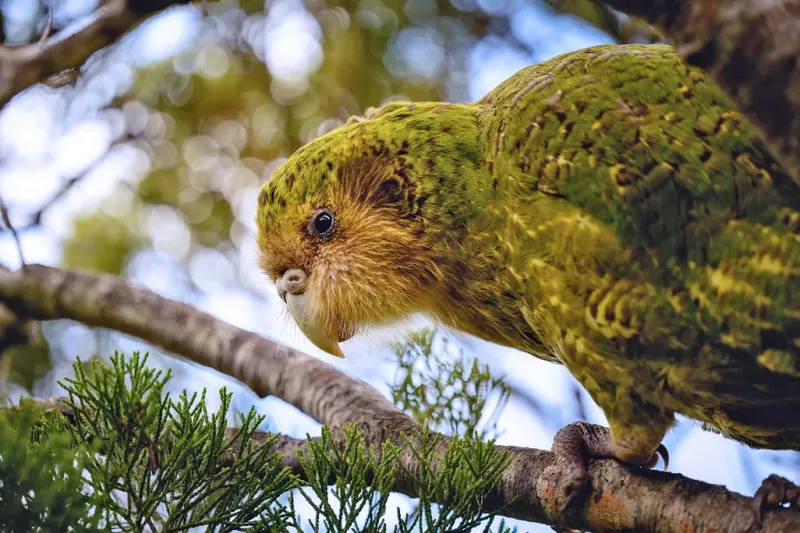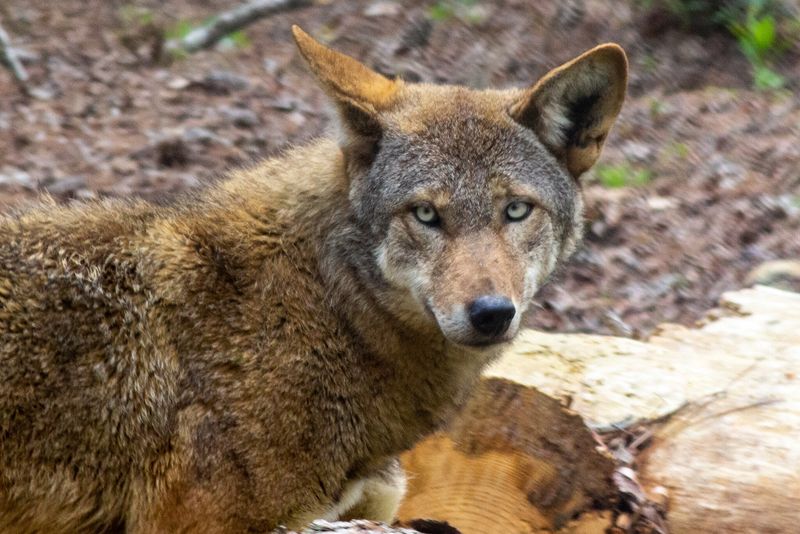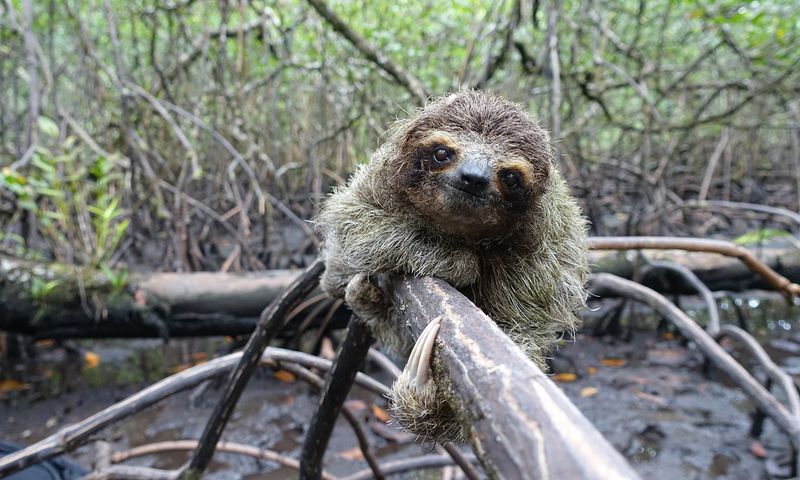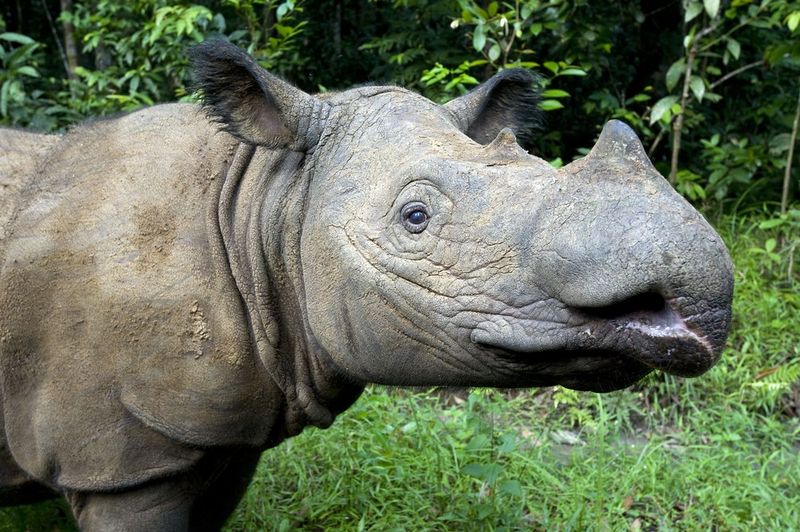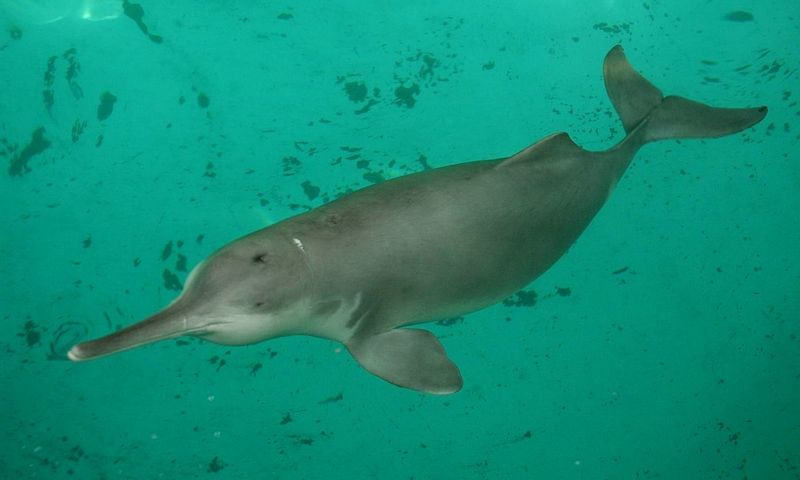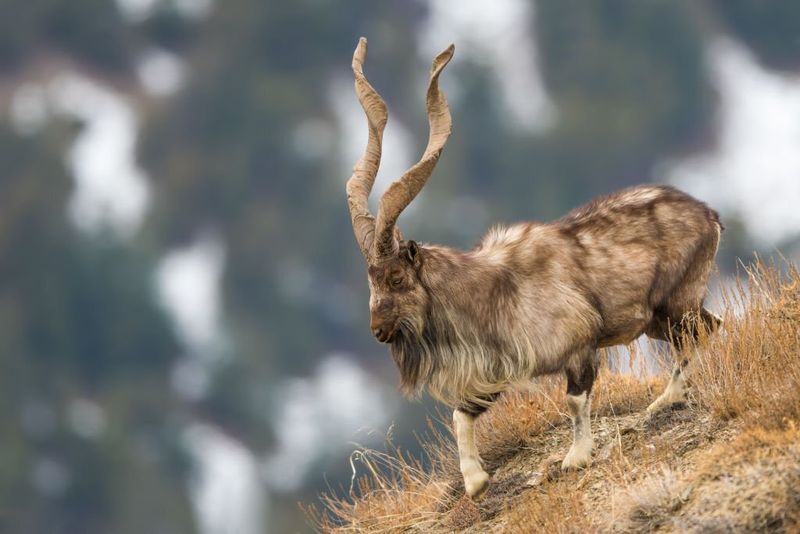📖 Table of Content:
Our planet is home to countless fascinating creatures, but some are so elusive they remain hidden from human eyes. These rare animals exist in remote corners of the world, protected by challenging terrain or dwindling in numbers due to habitat loss. From mysterious deep-sea dwellers to endangered land mammals, these creatures represent some of nature’s most precious treasures that few people will ever encounter in the wild.
1. Saola
Often called the ‘Asian unicorn,’ the saola wasn’t discovered until 1992 in the mountains of Vietnam. Scientists have never seen this animal in the wild, with only a handful of camera trap photos confirming its existence.
The saola resembles an antelope with two parallel horns that can reach 20 inches long. Their population is believed to be fewer than 100 individuals.
Forest destruction and hunting have pushed these gentle creatures to the brink of extinction. Despite conservation efforts, no saola has been captured on camera since 2013, making it one of the most critically endangered mammals on Earth.
2. Vaquita Porpoise
The vaquita holds the unfortunate title of the world’s most endangered marine mammal. Found only in Mexico’s Gulf of California, fewer than 10 individuals remain in the wild today.
These small porpoises measure just 5 feet long and feature distinctive dark rings around their eyes and mouth. Their population has collapsed due to illegal fishing practices, particularly gill nets set for another endangered species, the totoaba fish.
Despite international protection efforts and a fishing ban in their habitat, vaquitas continue to decline. Without immediate action, scientists predict they could become extinct within the next few years.
3. Amur Leopard
Classified as critically endangered, the Amur leopard is the rarest of all big cats. Fewer than 100 individuals remain in the wild, primarily within the temperate forests of Russia and northeastern China.
Their thick, pale cream-colored coat grows up to 3 inches long in winter, providing crucial protection against subzero temperatures. These solitary hunters can leap over 19 feet horizontally and run at speeds up to 37 mph.
Habitat loss, poaching, and inbreeding threaten their survival. Conservation breeding programs offer hope, but seeing these magnificent cats in their natural habitat remains a privilege few will ever experience.
4. Ili Pika
Hidden away until 1983, the Ili pika was found in China’s Tianshan Mountains. With its cute, teddy bear-like face, it’s been spotted on camera less than 30 times—no wonder it’s called the “magic rabbit.”
About the size of a house cat, these herbivores sport grayish-brown fur with rusty-red spots on their heads. They live at elevations between 9,800 and 13,450 feet, retreating further up mountains as climate change alters their habitat.
Scientists estimate fewer than 1,000 Ili pikas remain. Their population has declined by 70% since discovery, yet they receive little conservation attention compared to more charismatic endangered species.
5. Northern Hairy-Nosed Wombat
Australia’s northern hairy-nosed wombat stands as one of the world’s rarest mammals with fewer than 300 individuals left. These nocturnal marsupials live exclusively in two protected areas in Queensland.
Larger than their common cousins, they can weigh up to 70 pounds and measure three feet long. Their name comes from the distinctive whiskers on their muzzles, which help them navigate in the dark and locate food.
Droughts, predation by wild dogs, and habitat loss have decimated their numbers. Conservation efforts include predator-proof fencing, supplemental feeding during droughts, and a breeding program that has slowly increased their population from just 35 in the 1980s.
6. Giant Squid
The giant squid haunted sailors’ tales for centuries before scientists confirmed its existence. These deep-sea monsters can reach lengths of 43 feet and possess the largest eyes in the animal kingdom—up to 10 inches in diameter.
Living at depths between 1,000 and 3,000 feet, these elusive creatures weren’t filmed alive in their natural habitat until 2012. Their remote deep-sea home makes encounters nearly impossible.
Scientists have primarily studied giant squids through dead specimens washed ashore or caught in fishing nets. Despite their massive size, we know surprisingly little about their behavior, lifespan, or population numbers, making them one of the ocean’s greatest mysteries.
7. Javan Rhino
With only about 75 remaining in Indonesia’s Ujung Kulon National Park, the Javan rhino stands as the rarest of its kind—completely absent from captivity worldwide.
These massive creatures weigh up to 5,000 pounds and possess a single horn that can grow to 10 inches. Unlike other rhino species, they prefer dense, tropical forests and feed primarily on leaves and shoots.
Poaching drove them to near extinction in the early 20th century. Today, their tiny population faces threats from disease, natural disasters, and limited genetic diversity. Their concentration in a single location makes them particularly vulnerable to extinction from a single catastrophic event.
8. Omura’s Whale
Until 2003, Omura’s whales puzzled scientists—then genetic testing revealed their true identity as a distinct species. At up to 33 feet long, they’re streamlined but much smaller than their blue whale cousins.
Their asymmetrical coloration makes them unique: the right side of their jaw is white while the left side is dark. Scientists recorded the first-ever video of these whales in the wild off Madagascar in 2015.
Very little is known about their population size, migration patterns, or breeding habits. Their preference for deep tropical waters far from shore makes them exceptionally difficult to study, and most people—even dedicated whale watchers—will never glimpse these oceanic ghosts.
9. Hirola Antelope
The hirola antelope earns its nickname ‘the four-eyed antelope’ from the prominent preorbital glands beneath its eyes. Native to the Kenya-Somalia border region, fewer than 500 remain in the wild.
These medium-sized antelopes have light tan coats and distinctive white spectacle-like markings around their eyes. Both males and females possess lyre-shaped horns that can reach 27 inches long.
Prolonged droughts, habitat loss, and competition with livestock have driven their 85% population decline over the last 30 years. The hirola holds the unfortunate distinction of being the world’s most endangered antelope, with no individuals in captivity to serve as a backup population.
10. Okapi
Called the “African unicorn,” the okapi remained a mystery to Western science until 1901. In the shadowy depths of Congo’s Ituri Rainforest, these elusive creatures disappear into the dense foliage.
Despite resembling zebras with their striped hindquarters, okapis are actually the giraffe’s only living relative. They possess blue-black tongues long enough to wash their own ears and eyes.
Civil unrest, poaching, and habitat destruction threaten the estimated 10,000-20,000 remaining wild okapi. Most people will never see one outside zoos, as their secretive nature and remote habitat make wild sightings extraordinarily rare, even for researchers who study them.
11. Bornean Orangutan
With numbers halving over the last 60 years, the Bornean orangutan faces a critical survival crisis. These majestic great apes call only Borneo their home.
Known for their distinctive reddish-brown fur and incredible intelligence, they spend most of their lives in the forest canopy. Males develop large cheek pads and throat pouches as they mature, giving them their characteristic appearance.
Palm oil plantations have destroyed vast swaths of their habitat. Researchers estimate fewer than 100,000 remain in increasingly fragmented forest patches. Without immediate conservation action, these remarkable creatures—who share 97% of their DNA with humans—could disappear from the wild within decades.
12. Kakapo
The kakapo holds multiple distinctive titles: world’s heaviest parrot, only flightless parrot, and one of the longest-lived birds with a lifespan exceeding 90 years. Native to New Zealand, only 252 individuals remain alive today.
These moss-green nocturnal birds can weigh up to 9 pounds. Males perform an elaborate courtship ritual called ‘booming’ where they inflate like balloons and emit deep resonant calls that can travel over 3 miles.
Introduced predators like cats and stoats decimated their population after European colonization. Today, all surviving kakapo live on predator-free island sanctuaries under intensive management, with each bird named and monitored by conservation teams.
13. Red Wolf
Fewer than 20 red wolves remain in the wild, making them one of America’s most endangered canids. They survive only in a limited protected area in North Carolina.
Smaller than gray wolves but larger than coyotes, red wolves have distinctive reddish fur behind their ears and on their legs. They form strong family bonds and mate for life.
Hybridization with coyotes poses their greatest threat, diluting their gene pool. A captive breeding program maintains about 250 pure red wolves. Despite being native wildlife, most Americans have never seen these shy predators, and without intensive conservation efforts, they could become the first wolf species to go extinct in modern times.
14. Pygmy Three-Toed Sloth
Exclusively inhabiting the tiny Isla Escudo de Veraguas off Panama’s coast, the pygmy three-toed sloth was recognized as a unique species in 2001 and numbers fewer than 100.
About 40% smaller than mainland sloths, these teddy bear-faced mammals spend their entire lives in red mangrove trees along the island’s edge. Their fur hosts specialized algae that gives them a greenish tint—perfect camouflage in their mangrove habitat.
Unlike most endangered species, habitat loss isn’t their primary threat. Instead, their tiny range (just 4.3 square kilometers) makes them vulnerable to natural disasters and human disturbance. Their remote island home means virtually no tourists or wildlife enthusiasts ever see them.
15. Sumatran Rhinoceros
The Sumatran rhinoceros stands as the smallest and hairiest rhino species, with fewer than 80 individuals left on Earth. These ancient-looking creatures are the closest living relatives to the woolly rhinoceros that roamed during the Ice Age.
Covered in reddish-brown hair, they possess two horns and distinctive folded skin. Adults typically weigh between 1,300-2,000 pounds—small compared to their African relatives.
Habitat fragmentation has isolated remaining populations, preventing breeding. Females often develop reproductive problems when they go too long without mating. Despite intensive protection efforts in Indonesia and Malaysia, their numbers continue to decline, making them the most endangered of all rhinoceros species.
16. Baiji River Dolphin
Once swimming the Yangtze River, the baiji river dolphin may be the first dolphin species wiped out by human activity. After a 2006 survey found none, scientists declared it ‘functionally extinct.’
These pale blue-gray dolphins grew up to 8 feet long and had poor eyesight, relying instead on echolocation to navigate muddy waters. They evolved over 20 million years ago.
Industrialization along the Yangtze, fishing with electrical hooks, and boat collisions decimated their population. Though occasional unconfirmed sightings offer a glimmer of hope, most experts believe we’ve lost this species forever—a sobering reminder of how quickly humans can erase millions of years of evolution.
17. Markhors
Known as Pakistan’s national animal, the markhor impresses with its spiraled horns, which can grow over 5 feet long—the longest of any goat species.
These mountain goats inhabit the rugged mountains of Central Asia at elevations up to 12,000 feet. Their name comes from Persian words meaning ‘snake eater,’ reflecting an ancient belief that they hunted serpents.
Once down to fewer than 2,500 individuals, their population has recently increased thanks to conservation efforts and regulated trophy hunting programs that give local communities economic incentives to protect them. Despite this progress, seeing a wild markhor remains an extremely rare privilege limited to the most dedicated wildlife enthusiasts.
